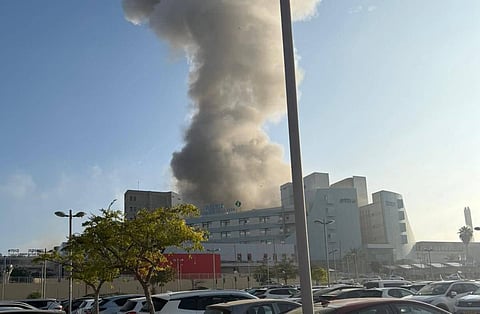

As the first week of the Israel-initiated war against Iran comes to a close, the world remains in a precarious state. The potential involvement of the United States looms heavily over the conflict, with U.S. President Donald Trump at the center of chaotic, back-and-forth media reports regarding his intentions.
While the pace of direct military exchanges between Israel and Iran has slowed in recent days, the possibility of a U.S. intervention keeps global tensions high. Much of the international focus has shifted to Trump’s statements and decision-making, as the region braces for what may become a long-term war of attrition.
The conflict began in the early hours of Friday, June 13, with intense Israeli airstrikes that assassinated multiple commanders of Iran’s Islamic Revolutionary Guard Corps (IRGC), along with other military figures and nuclear scientists. Israel also targeted several nuclear facilities, most notably Natanz.
According to reports, Iran’s air defenses were shut down in the early hours of the conflict due to a large-scale cyberattack and sabotage campaign, reportedly supported by Mossad-linked collaborators who launched drones and rockets from inside the country. This allowed Israel temporary air superiority over western Iran.
By Friday evening, however, Iran responded forcefully, striking the Kirya in Tel Aviv—widely regarded as Israel’s equivalent to the Pentagon—along with other strategic sites across the country as well as bringing its air defense back online.
Over the weekend, Israel escalated by targeting Iran’s energy infrastructure, including refineries and gas fields. In retaliation, Iran struck Israel’s largest refinery—the Bazan Group facility in Haifa—on Monday, forcing it offline.
On Sunday, Iran also struck the Weizmann Institute of Science Area, in Rehovot, which is one of the leading research facilities in Israel with video footage showing significant damage to the building.
By the beginning of the week, the number of Iranian missiles being fired in each salvo had decreased as did the number of confirmed Israeli air strikes, as the bulk of the strikes on Iran still appeared to be coming from within the country by internal operatives.
The targeting by the Israelis also took a familiar turn to civilian infrastructure on Monday, when Israel struck the Islamic Republic of Iran Broadcasting (IRIB) while they were live on air. Despite this, news anchor Sahar Emami, who was on broadcasting when the strikes occurred, came back on air shortly after in defiance of the Israeli's.
To close out the first week on Thursday, Iran also struck military facilities in Beersheba as well as hits in the Financial District in Tel Aviv.
While the pace of airstrikes has slowed since then, Iran now faces a significant internal security threat: Mossad-affiliated operatives continue launching drone and car bomb attacks from within the country. Local sources suggest that as much as 90% of Israeli strikes on Iran since Sunday have been carried out by internal agents, supported by clandestine drone factories and covert transport operations.
Videos have also emerged of tires being burnt in the country, likely by these operatives, so as to try and create panic amongst the population.